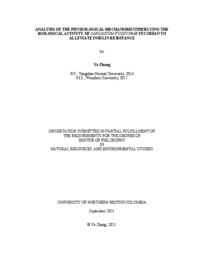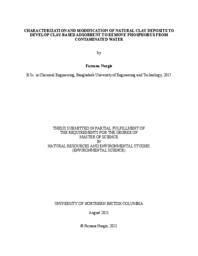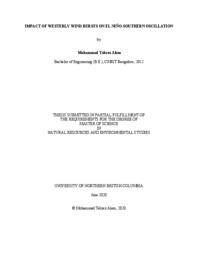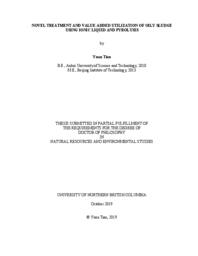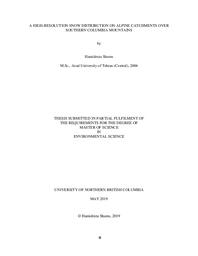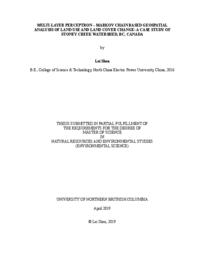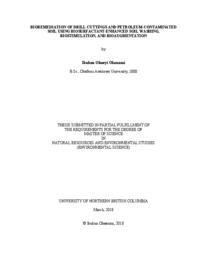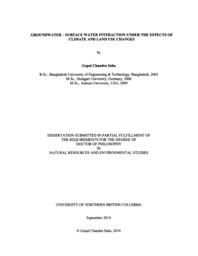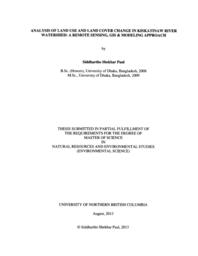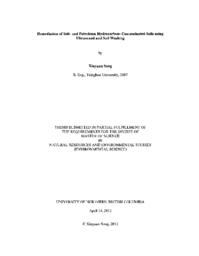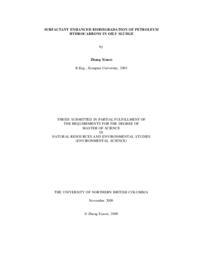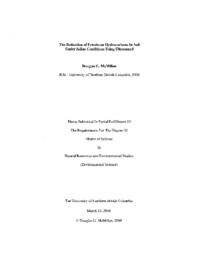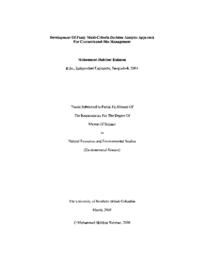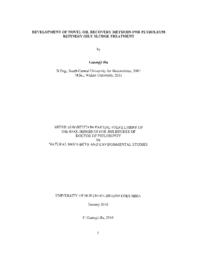Li, Jianbing
Person Preferred Name
Jianbing Li
Related Works
Content type
Digital Document
Description / Synopsis
Type 2 diabetes mellitus (T2DM) is a chronic metabolic disease characterized by hyperglycemia resulting from progressive loss of β-cell insulin secretion frequently on the background of insulin resistance. T2DM, also known as non-insulin-dependent diabetes, accounts for more than 90% of all cases of diabetes. Insulin resistance (IR) refers to the reduced sensitivity of peripheral tissues to insulin and is one of the important triggers of type 2 diabetes. Sargassum fusiforme polysaccharide exhibits diverse biological activities, and more and more studies have shown it has a significant effect in improving insulin resistance with almost no side effects. Sargassum fusiforme fucoidan (SFF) is one of the main active components with active ingredients such as antioxidants and hypoglycemic lipids. However, the ameliorative effects of SFF on high-fat diet-induced insulin resistance mice and its underlying physiological mechanisms are not clear. Hence, the polysaccharides were extracted and purified from Sargassum fusiforme, and fucoidan (SFF), which has good antioxidant activity, was screened using a drosophila melanogaster aging model. The effect of SFF on the amelioration of insulin resistance in mice was investigated with a high-fat obese insulin resistance mice model. By gut microbiota and metabolomics techniques, the effect of SFF on intestinal metabolites and its mechanism of alleviate IR were investigated. After treatment with 200 mg/kg SFF for 8 weeks, it was found that SFF could reduce body weight, fasting blood glucose and homa-IR in insulin resistance mice. SFF could effectively activate Nrf2/ARE antioxidant signaling pathway in the liver and promote Nrf2 entry into the nucleus and downstream gene transcription. Metabolomics and intestinal microecology revealed that SFF could upregulate TUDCA level and downregulate ceramide level in mice colon and serum, and this change was dependent on gut microbiota. TUDCA effectively inhibits the FXR/SHP signaling pathway activated by a high-fat diet, thereby reducing the biosynthesis of enteric-derived ceramides. In addition, TUDCA in the liver could compete with Nrf2 to bind Keap1 to reduce the formation of the Nrf2/Keap1 complex, reduce Nrf2 ubiquitination, and thus contribute to Nrf2/ARE signaling activation. In conclusion, fucoidan from S. fusiforme was able to modulate gut microbiota, increased the levels of the intestinal metabolite TUDCA, reduced biosynthesis of entericderived ceramides and activated the Nrf2/ARE pathway, which in turn significantly improved insulin resistance induced by high-fat diet in mice. This study provides a new research idea for the study of brown algae fucoidan in metabolic diseases.
Origin Information
Content type
Digital Document
Description / Synopsis
Modification of natural clays may be a useful approach to produce an effective and low-cost adsorbent to control phosphorous, which is a key factor in controlling the eutrophication of surface waters. In this study, natural clay samples were collected, characterized, modified with ZrCl4, and then their adsorption capacity for removing phosphorus from contaminated water was studied. XRD analysis showed that the natural clay consists of kaolinite, illite, and nontronite as dominant clay mineral phases. The maximum adsorption capacity of the modified clay increased from 0.493 to 11.83 mg P/g compared to the unmodified clay. The adsorption process was fast for both natural and modified samples, achieving more than 80% and 90% phosphorus removal with natural and modified samples, respectively in less than 4 hours. The adsorption data for both clays best fit the Langmuir isotherm, and the rate of phosphorus adsorption was found to follow a pseudo-secondorder kinetic model. The adsorption capacity of both adsorbents decreased with increasing pH, and for the modified clay the change was more significant. Full factorial design and response surface methodology were applied to evaluate and optimize the effects of initial P concentration, contact time, pH, and dose. From the model, the maximum P removal efficiency predicted for the synthetic solution was 91.5% and 99.9% by natural and modified clay, respectively. R2(≈0.98) indicates that the observed results fitted well with the model prediction. Similar to the batch studies, the fixed bed column study showed the developed adsorbents are efficient in removing phosphorus from water in a continuous process as well.
Origin Information
Content type
Digital Document
Description / Synopsis
Westerly wind bursts (WWBs), usually occurring in the tropical Pacific region, play a vital role in El Niño–Southern Oscillation (ENSO). In this study, we use a hybrid coupled model (HCM) for the tropical Pacific Ocean-atmosphere system to investigate WWBs impact on ENSO. To achieve this goal, two experiments are performed: (a) first, the standard version of the HCM is integrated for years without prescribed WWBs events; and (b) second, the WWBs are added into the HCM (HCM-WWBs). Results show that HCM-WWBs can generate not only more realistic climatology of sea surface temperature (SST) in both spatial structure and temporal amplitudes, but also better ENSO features, than the HCM. In particular, the HCM-WWBs can capture the central Pacific (CP) ENSO events, which is absent in original HCM. Furthermore, the possible physical mechanisms responsible for these improvements by WWBs are discussed.
Origin Information
Content type
Digital Document
Description / Synopsis
The effective treatment of oily sludge has been a challenging problem faced by the petroleum industry worldwide. It is a semi-solid mixture of hydrocarbons, water, metallic ions, and suspended fine solids. The recalcitrant nature of oily sludge makes the treatment a difficult and costly task. The objective of this dissertation research was to develop environmentally friendly and economically competitive techniques for oily sludge treatment. Three different approaches were developed: ionic liquid (IL)-enhanced solvent extraction, co-pyrolysis with wood waste, and value-added utilization of oily sludge as sorbent to remove lead (Pb2+) and cadmium (Cd2+) from solution. Firstly, as compared to conventional solvent extraction, the IL-enhanced solvent extraction not only improved oil recovery efficiency but also greatly reduced solvent and energy consumption as well as shortening the treatment duration even at low IL concentration. Secondly, co-pyrolysis of oily waste and hog fuel was conducted in a fixed bed reactor. Three experimental parameters (pyrolysis temperature, reaction time, and hog fuel addition) were explored to optimize both oil recovery and metal ion immobilization. The latter was tested through sequential extraction techniques with high temperature pyrolysis leading to metal ions fixed within the residues. The addition of hog fuel had a significant synergistic effect on the distribution of metal ions in the various extraction fractions resulting in lower risk index (RI) values. Thirdly, the oily sludge-derived char (OS500) obtained at 500 °C could effectively remove Pb2+ from solution with the maximum sorption capacity of 373.2 mg/g (based on a Langmuir model). Sorption of Pb2+ by the OS500 was mainly attributed to its precipitation with carbonate (CO32‒) originating in OS500. The maximum sorption capacity for Cd2+, using a Langmuir model, was 23.19 mg/g. Complexation and metal ion exchange dominated Cd2+ sorption on OS500. The Pb2+ sorption capacity dramatically decreased as the iii pyrolysis temperature increased from 500 to 900 °C due to the decomposition of minerals which could release CO32‒ at high temperature. The activated OS500 showed a higher sorption capacity (90.06 mg/g) for Cd2+ than OS500 (23.95 mg/g) because conversion of barite (BaSO4) to witherite (BaCO3) after chemical activation favored the precipitation of Cd-carbonate.
Origin Information
Content type
Digital Document
Description / Synopsis
Local scour around piers and abutments is one of the main causes of the collapse of many bridges constructed inside rivers. Many researchers have conducted various studies to predict the maximum depth of a scour hole around bridge piers and abutments. However, most of them have been done in small-scale laboratory flumes and specifically for the open channel condition. Besides, most of the existing research on bridge piers uses uniform sediment which is not an appropriate representative of natural river systems. This can result in excessively conservative design values for scour in low risk or non-critical hydrologic conditions. The most severe cases of bridge pier scouring occur in cold regions when the surface of water turns into ice in which, an additional boundary layer is being added to the water surface, which leads to significant changes in the flow field and scour pattern around bridge piers. Ice cover also causes the maximum flow velocity to move closer to the channel bed.
Origin Information
Content type
Digital Document
Description / Synopsis
Snow plays an important role on the hydrological cycle of watersheds in cold regions. Predicting timing and magnitude of snow accumulation and ablation is necessary for water management in different sectors. A spatially distributed snow model (SnowModel) is chosen for our research, which is forced by meteorological data provided from automated weather stations. SnowModel is evaluated for two watersheds in southeast of BC. Two consecutive year (2006-2008) are selected for the calibration and validation processes. Simulated snow depth and snow water equivalent (SWE) are compared with observed data from snow pillows. Two error factors of Nash-Sutcliffe Efficiency Index, and R-squared show 0.96, 0.98 values in accumulation period and 0.87, 0.86 for ablation period, respectively. Spatially distribution of snow depth and SWE over domains also are discussed. In general, SnowModel is able to estimate the accumulated snow depth and SWE in alpine areas in a high level of accuracy.
Origin Information
Content type
Digital Document
Description / Synopsis
This thesis study analyzed the land use and land cover (LULC) changes in Stoney Creek Watershed, BC, Canada using the combination of remote sensing, GIS and modeling approaches. The Object-Based Image Analysis (OBIA) tool in PCI Geomatica 2017 software was applied to generate unsupervised classification LULC maps using Landsat TM and OLI images of the years 1986, 1999 and 2016. Various band ratio were computed to improve different classification results. Esri ArcMap 10.5 was used to produce all the LULC maps for subsequent modeling. A modeling method using Multi-layer perceptron (MLP) neural network and Markov Chain (MC) was performed to predict LULC changes in 2026, using hard and soft prediction results. The outcomes of this study could provide valuable information of LULC patterns and dynamics for supporting both environmental and economic development in this area.
Origin Information
Content type
Digital Document
Origin Information
Content type
Digital Document
Origin Information
Content type
Digital Document
Origin Information
Content type
Digital Document
Origin Information
Content type
Digital Document
Origin Information
Content type
Digital Document
Origin Information
Content type
Digital Document
Origin Information
Content type
Digital Document
Origin Information
Content type
Digital Document
Origin Information
Content type
Digital Document
Origin Information
Content type
Digital Document
Origin Information
Content type
Digital Document
Origin Information
Content type
Digital Document
Origin Information
Content type
Digital Document
Origin Information

